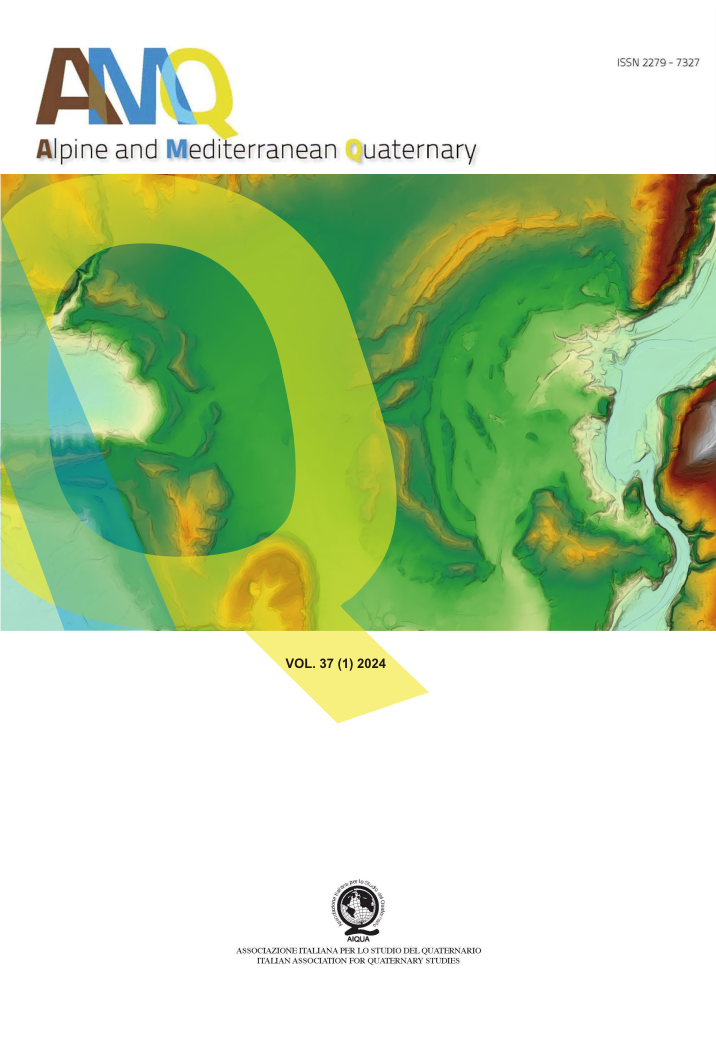Last Glacial Maximum glaciolacustrine deposits from the Adige River Glacial Amphitheatre (Rivoli Veronese, Northern Italy): distribution, sedimentary facies, and significance
Main Article Content
Abstract
Proglacial lakes are complex environments that can unravel the sedimentary dynamics of glacier, giving a crucial insight during the deglaciation phases. In this optic, the interplay between proximal and distal glaciolacustrine facies is a fundamental record of paleoenvironmental, paleoglaciological and paleoclimate changes that occurred to glacier and its surrounding landscape. Situated at the Southern Alps foothill (Northern Italy), the Adige River Glacial Amphitheatre, surrounding the Rivoli Veronese town, contains glaciolacustrine sediments in its innermost moraine ridges. This glacial amphitheatre formed during the Last Glacial Maximum (LGM), when it shaped the outermost ridges related to maximum advances, and subsequent retreats modelling the inner moraine ridges. In the innermost one, the outcrops were described and recognized as glacial diamictons, fluvioglacial gravels and glaciolacustrine heterolithic deposits. The focus on the glaciolacustrine sediments permitted to disentangle between the coarser sediments, such as sand and gravelly sand, are attributed to the proximal facies, while sandy silt, silty clay and silt are interpreted as distal facies. The study of the distribution of proglacial deposits shows a complex evolution of the lacustrine system during the deglaciation stages. In fact, two time-distinct glaciolacustrine phases are recorded in the investigated area: the former is linked to a glacial pulsation preceding the last phase of LGM or all LGM phases, while the latter related to the LGM final recessional glacial step. The ice-marginal proglacial lake, relative to the last phase of LGM, can be further separated in two spatial different systems (respectively northern and southern); this distinction is based on different facies associations and patterns that are recognized in the two studied portions. In the final step, the two lakes coalesced together, and probably a glacial lake outburst flood happened, emptying the proglacial lake and leaving evidence in the Venetian Plain, South of the Adige River Glacial Amphitheatre. The comprehension of the deglaciation of the lower Adige Valley helps to reconstruct the transition between LGM and Post-Glacial period in the Southern Alpine region.
Article Details
Issue
Section

This work is licensed under a Creative Commons Attribution-NonCommercial-NoDerivatives 4.0 International License.
The Author grants usage rights to others using an open license (Creative Commons or equivalent) allowing for immediate free access to the work and permitting any user to read, download, copy, distribute, print, search, or link to the full texts of articles, crawl them for indexing, pass them as data to software, or use them for any other lawful purpose.

